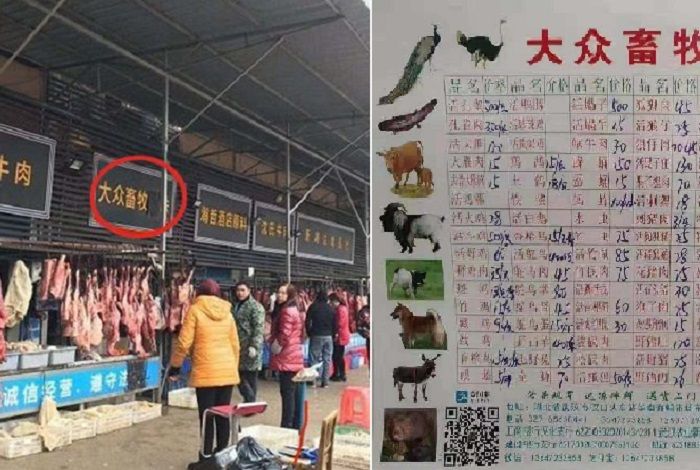Chinese authorities said on Saturday (Jan 25) that an additional 15 people died in Wuhan where the coronavirus (also called 2019-nCov) has emerged, bringing the total death toll to 41 people with over 1300 infected in over 10 countries.
Hospitals in Wuhan, the largest and most populous city in central China is totally overwhelmed as it faces a shortage of beds and long outpatient queues. Authorities announced they would construct a 1,000-bed dedicated pneumonia hospital in the city within six days to help treat the hundreds of people affected by the virus. The hospital will be a prefabricated, box-type model that can be built in a short time frame.
A Level 1 emergency response has been declared to combat the outbreak as the city is placed under lockdown since Thursday. Public transport has been suspended in 10 neighboring cities in an effort to contain the spread. Restrictions on public gatherings have also been implemented in the region as Saturday marks the first day of the Lunar New Year. Indefinite travel restrictions have been imposed on tens of millions of people who live in the 11 cities at the centre of the outbreak.
Despite numerous aggressive measures taken by authorities the dramatic rise in death count shows that the virus isn’t yet under control. On Friday, two cases have been confirmed in US from people who returned from China while in France, Europe’s first two cases were identified.
The virus has now progressed into third generation spread with the death of an 80-year-old man near Beijing on Friday. It is the first death outside of the outbreak’s center, as the man had visited Wuhan and stayed with relatives for over two months. Third generation spread means when someone who became infected after handling animals at the market spreads the virus to someone else, who then spreads it to a third person.
The Huanan Seafood Market where it all started
A 61-year-old man who was a regular shopper at the Huanan Seafood Market was the first person to die from the virus. Authorities had since shuttered the market where the outbreak of this virus is believed to have begun on January 1 and banned the trade of live animals at wet markets on Wuhan, China on Wednesday.
Before the Huanan market closed, vendors there sold processed meats and live animals, including chickens, donkeys, sheep, pigs, foxes, badgers, bamboo rats, hedgehogs, and snakes. The close proximity of shoppers to stall vendors and live and dead animals in wet markets make them prime breeding grounds for zoonotic diseases, which means they spread from animals to people.
These zoonotic diseases pose a pandemic risk as they are carried by viruses that have not been circulating in humans before, therefore specific immunity to these viruses are absent in humans. Wet markets put people and live and dead animals in constant close contact making it easy for a virus to jump from animal to human.
Just like in the case of SARS (Severe Acute Respiratory Syndrome) which originated in wet markets in the province of Guangdong, a population of bats in China’s Yunnan province were the original host SARS which infected other animals. Humans caught the virus from a masked palm civet which was infected by the bats. 774 people across 29 countries were killed between 2002 and 2003 due to SARS. Three other zoonotic diseases that most likely came from bats are MERS, Nipah virus and Ebola outbreak.
MERS (Middle east respiratory syndrome), passed from bats to camels, circulated in the population undetected for decades before jumping to humans in 2012. 858 people have died in 28 countries from the illness, which comes with fever, cough, and shortness of breath.
The deadly Nipah virus, which emerged in Malaysia in 1998 and then again in India in 2001 was passed from fruit bats to farmed pigs, which passed it to people. Patients experienced headaches and vomiting while many slipped into a coma and died. While the Ebola outbreak killed more than 11,000 people from 2013 to 2016 in which the fruit bats in Africa played a major role.
Experts haven’t yet confirmed the animal species that enabled the Wuhan coronavirus to spread to people but when compared it with other coronaviruses, they found it to be most similar to two bat coronavirus samples from China. Further analysis showed that it’s genetic building blocks closely resembled that of snakes and could be of the Chinese cobra.
The race against time to understand the virus
Scientists around the globe are still working to understand the virus better, such as it’s origins and how contagious it is. Initially appeared to spread only by very close contact within a family such as hugging, kissing, or sharing eating utensils but now evidence show that more distant contact such as sneeze or cough could spread the virus.
Infected people show symptoms that resemble cold or flu including sore throats, headaches, and fevers, as well as pneumonia like breathing difficulties. They only show mild symptoms usually after an incubation period of about two weeks making it a challenge to contain this outbreak.
The World Health Organization (WHO) on Thursday declared the new coronavirus an emergency within China but has refrained from classifying the outbreak as an international epidemic.











